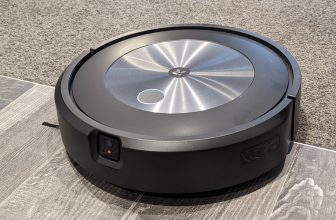
Detailed Review of Canon EOS R7
Overview of Canon EOS R7
The EOS R7 is a tiny, portable all-arounder, marketed as a sports and wildlife camera, also a fantastic all-arounder, capable of capturing a wide range of other subjects such as landscape. Its tiny size and 18-150mm kit lens make it an ideal alternative for travel since that focal range covers a spectrum of objects.
The few reasons not to purchase it are when users are annoyed by the scarcity of native RF-S lenses. Sports and wildlife photographers are currently better served by cameras like the Sony A6600 and the Fujifilm X-H2S, both of which have an outstanding choice of lenses. Before purchasing anything like the R7, users need to start thinking about the things they want to study and the amount of money they want to invest.
Design of Canon EOS R7
Canon blended features from its line-up of DSLRs, and its current EOS R series cameras to create the EOS R7, making it both transportable and intuitive. If users have already used a Canon EOS camera, they will feel at home. The EOS R7 features a deep, hefty grip, which is why it should be popular among photographers for such a compact camera. At the same time, the camera’s overall size isn’t prohibitively large for any photography expeditions.
What users do get is a well-thought-out control system. The system features a mode dial placed to the right of the viewfinder, a control dial immediately below the shutter button, and dedicated buttons for ISO and video recording just behind that. Almost all the controls are located on the right side of the camera, making it perfect for one-handed usage, within easy reach of the user’s thumb due to the compact size of the camera.
If a user upgrades from a DSLR to the EOS R7, they might get acclimated to the electronic viewfinder. The R7’s display is probably antiquated, with 2.36m dots, 1.15x magnification, and a refresh rate of 120fps. It’s also convenient to fold the camera’s screen in on itself while transporting it in a bag to avoid scratches.
Some users have anticipated the EOS R7, a camera aimed at wildlife and sports enthusiasts, to contain a CF express slot for ultra-fast photography. SD cards are also much cheaper now, so it’s a solution for individuals on a tight budget.
Performance and Features Canon EOS R7
The 6.55-inch P-OLED display on the Motorola Edge 30 Fusion has a hole punch cutout at the top. The visuals on the screen appear large and the screen size appears tall. It supports a refresh rate of 144 Hz, which makes everything feel fluid while scrolling through the device and playing games. The screen’s peak brightness of 1100 nits makes it ideal for use both inside and outside. The images on the screen are colorful and dynamic. The display provides fairly clear visuals and scrolling is incredibly smooth. Due to its vibrant colors and superior contrast levels, watching OTT content is a pleasant experience. Corning Gorilla Glass 5 safeguards the display so that it does not shatter or scratch easily.
With its high-quality autofocusing and burst-shooting capabilities, the Canon EOS R7 is aimed at wildlife and sports photographers. It also outperforms several of Canon’s previous EOS R entry-level models, including the EOS M APS-C versions.
This strength is complemented by Canon’s newest auto-focusing technology, Dual Pixel CMOS AF II. Dual Pixel CMOS AF II, covers the entire frame and also features sophisticated and helpful technologies such as intelligent subject-tracking, which can recognise animals (dogs, cats, and birds), cars, and humans.
When shooting animals or humans, users will see face and eye detection and subject tracking. Of course, rapid shooting speeds are required for sports and wildlife photography, and the EOS R7 provides this.
While 30fps is excellent, users don’t get the same deep buffer as they would on a more costly model like the EOS R6 or R5. At 30 frames per second, the camera will need to halt after just 42 raw files. It’s worth mentioning that users will need a fast UHS-II memory card to take full use of these speeds.
It’s worth noting that the EOS R10 has a comparable hit rate and is even cheaper than the EOS R7. The battery life of 500 shots is enough for a mirrorless camera. Users can also charge the camera through USB, so if they are worried, they could always bring a battery pack for power bursts on the move.
Video and Image Quality
The EOS R7 boasts a high megapixel count for an APS-C camera at 32.5MP. The disadvantage of having so many pixels jammed into such a small surface area is that low-light shooting cannot match with full-frame models or even APS-C models with lower resolutions. Overall, the image quality of the EOS R7 is satisfactory.
The automated white balance option is performed admirably in every lighting environment, users can even instruct the camera to select warm or cold tones according to their preferences. The video quality is likewise good, with uncropped 4K/60p footage and 4:2:2 10-bit color depth. One disadvantage of video is that there is no 4K/120p mode for slow-motion filming, although this isn’t a deal breaker for most people.
Specifications
| sensor | 32.5MP APS-C CMOS |
| video | 4K/60p, Full HD/60p, High-speed 120p Full HD |
| weight | 612g This includes both Battery and the SD card |
| Max burst | 15fps mechanical shutter (buffer 224 JPEG / 51 raw), 30fps electronic shutter (buffer 126 JPEG / 42 raw) |
| View Finder | 0.39- inch OLED 2.36m-dot resolution. |
| LCD | 2.95 inch vari-angle touch 1.62m-dot. |
| Connectivity | Wi-Fi, and Bluetooth |









